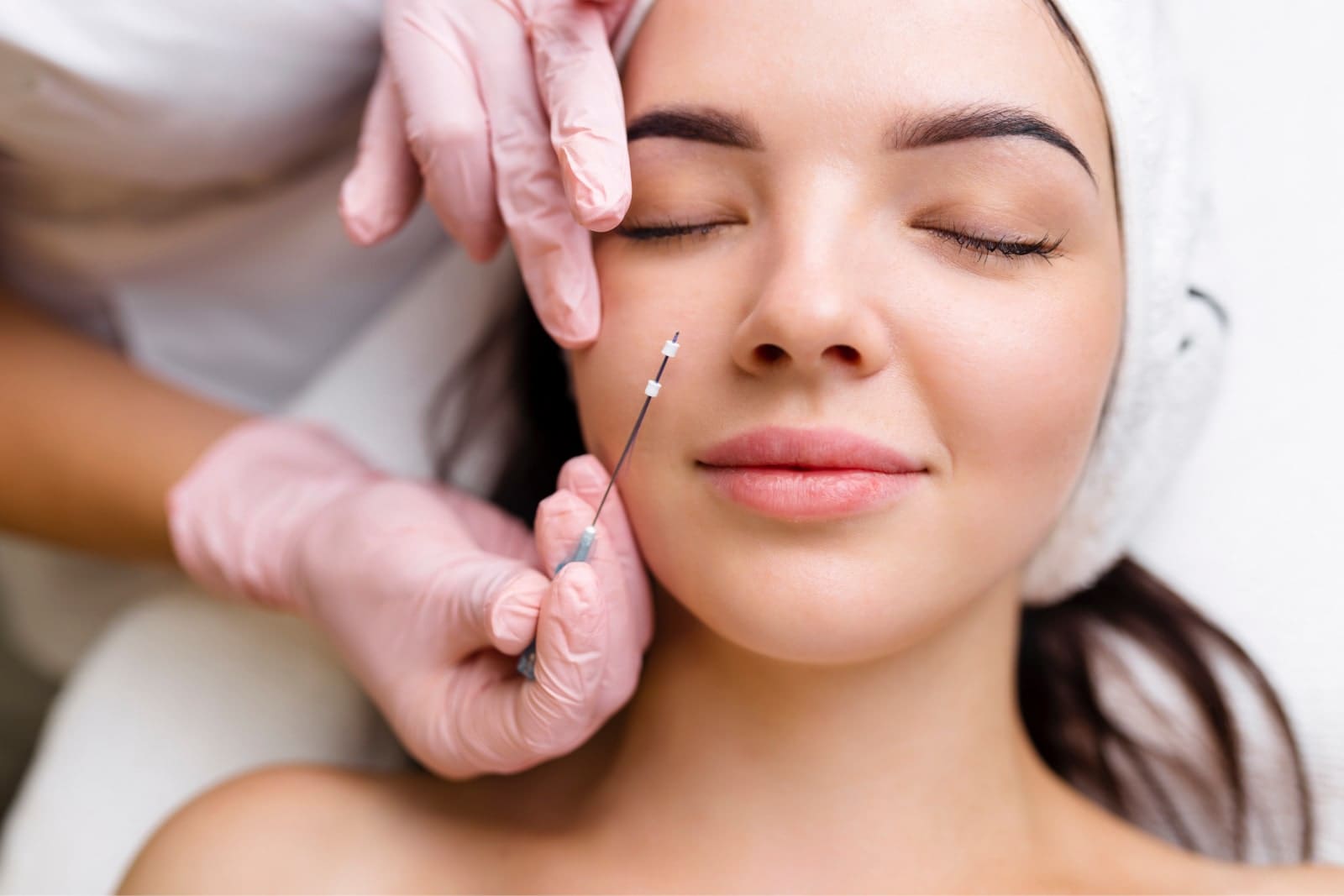The world of aesthetics is forever changing, and aging issues that years ago could only be corrected with traditional plastic surgery can now be improved with minimally invasive and non-invasive procedures. The ever-popular PDO (polydioxanone) thread lift is one such example. Aftercare for your PDO thread has it’s importance in the recovery process.
The second-generation PDO thread lift, which is more flexible and durable than the original threads used, is gaining traction as an effective surgery-free way to address facial skin laxity in the mid-face, such as jowls and droopy cheeks. The procedure can also improve the look of fine lines and wrinkles while giving certain facial features a more contoured and defined appearance. In years past, a facelift was the only option. Today, PDO thread lifts work to lift and tighten slack skin so that it sits at a more youthful position for a tighter, more chiseled-looking face. Unlike surgery, which is permanent, PDO threads are dissolvable and even stimulate collagen production for a dramatic effect.
But even with minimally invasive procedures, caring for the skin after the quick treatment is of the utmost importance, especially since it will help to maximize and maintain the result.
How long does it take for PDO threads to settle?
PDO threads can take about one to two months to settle fully. Although you’ll see immediate results, any initial side effects should resolve within the first two weeks. During this time, the face may be tender and still swollen.
Quite a few factors determine how fast the threads settle, like your age, the quality of your skin, and the current quality of collagen. As the sutures dissolve, new collagen is created, producing effects lasting for about six months. All in all, the results of a PDO thread lift last nine to 12 months. There are tips we have for your PDO Thread aftercare that you can take to reduce side effects.
What are the main dos and don’ts after a PDO thread lift?
PDO threads aftercare is super important to prevent complications or compromise the results. Some of the essential PDO threads do and don’t include the following:
- Don’t rub your face: Rubbing the skin after a thread lift can force the threads to move out of their place and compromise the results. Make sure to skip rubbing or massaging the face as the skin heals. Also, if your everyday skincare routine requires harsh rubbing, avoid that step (if possible) for the time being. If not, apply all skincare products gently and use a thin product layer when possible.
- Continue to work out: Exercise is important, but you’ll want to take it easy for the first two weeks. Instead of partaking in vigorous exercises, opt for light activities like walking. You’ll want to press pause on running, weightlifting, yoga, spinning classes, and any other workouts that cause the head to be below heart level.
- Don’t wear makeup at first: For the first 48 hours, it’s best to avoid wearing makeup to allow the suture sites to heal appropriately. Plus, going makeup-free reduces the risk of rubbing or tugging on the skin during makeup application and removal.
- Do follow all post-PDO thread lift aftercare instructions: No matter what, follow your provider’s aftercare instructions to a T.
- Do keep the area dry and clean: It’s best to avoid getting the sites where the threads are placed wet for at least one to two days after to promote healthy healing.
- Don’t get direct sun exposure on the skin: Remember that the face is still healing for at least two weeks, so it’s best to avoid exposing the area to direct light and avoid tanning beds. When going outdoors, always wear sunscreen and a protective hat.
- Do apply cold compresses as needed: Icing the treated area and surrounding areas can help reduce swelling. But make sure to only keep the ice pack on the skin for 10 to 15 minutes. Putting too much ice on the skin for too long can cause injuries.
How long after PDO threads until I can sleep on my side?
Sleeping on your back and not your side or stomach after a PDO thread lift is a critical PDO Thread aftercare tip. That’s because stomach and side sleeping can place unnecessary and potentially damaging pressure and friction on the face and even interfere with healing. Therefore, avoiding sleeping on your side for at least one week post-treatment is often recommended. To sleep more comfortably, try propping your head up with an extra pillow, which will help minimize any swelling.
How soon after a PDO thread lift will the results be seen?
The effects of a thread lift are immediate, and you’ll see a dramatic lifting and tightening effect. But several factors can influence when the full results of the lift are seen, like the skin’s condition, age, and how much collagen is currently in the skin.
However, the regenerative benefits of the procedure take a little longer to see. Once the threads resorb into the skin and collagen production begins, you’ll see a natural-looking firmness to the skin overall. So think of it as an immediate result that improves over time. Still, most patients see a noticeable improvement in their skin texture and tautness in the first few days after a PDO thread lift, which only continues to improve.
How soon after a PDO thread lift can I get fillers?
You’ll want to give your face plenty of time to heal, so PDO threads aftercare is essential. And part of that aftercare is holding off on other cosmetic procedures like filler until you are given the green light.
It’s best to wait for about one-month post-PDO thread lift before injectables or fillers are injected into the face. This provides ample time for the threads to settle and for any swelling and bruising to subside. Injecting filler too soon can cause undesirable thread results and complications like shifting fillers and additional swelling and bruising in the area. Before deciding on any fillers, it’s best to ensure your provider tells you the healing process is complete.
When can I resume my regular skincare routine?
It’s best to keep your skincare routine as simple and low maintenance as possible during the PDO threads aftercare period. For the first two days, stick to gentle cleansing with no pressure on the skin and light moisturization. For about three weeks, avoid exfoliating scrubs or peels, harsh skincare products, and professional treatments.
Around week two, returning to a more regular at-home skincare routine is considered safe as long as you practice gentle application methods. You don’t want to pull, tug, or stretch out the skin or cause any irritation in the treated areas.





